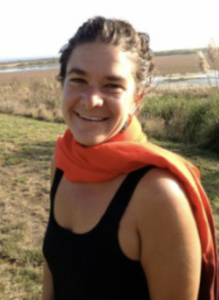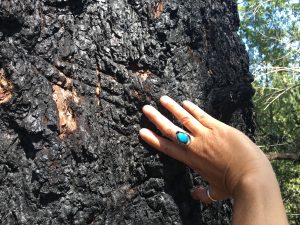
The North Bay Bear Collaborative (NBBC) is a working group of agencies, non-profit conservation groups, landowners and individuals committed to informing people on how to live among bears safely. With a recent increase in bear sightings in Mendonoma, NBBC member representatives wildlife tracker/educator/author Meghan Walla-Murphy and Stacy Martinelli of CA Fish and Wildlife will talk about the natural history of bears to help both our human and bear communities stay safe and resilient and mitigate future challenges that may arise from an increasing black bear population.
The talk will take place on Thursday, January 11 at 7 p.m. at the Gualala Arts Center. Admission is $5 at the door, donations are always welcome.

Meghan Walla-Murphy has been tracking animals avidly for more than two decades, which adds a depth and breadth to her work in habitat conservation and public awareness. As an educator, ecologist and author of books, essays and articles, Meghan strives to help people connect to their external and internal landscapes. She is director of the NBBC (www.beingwithbears.org). She has also co-authored a book on tracking with carnivore biologist Dr. James Halfpenny as well as a book on the historical ecology of salmonids in the Russian River.
Stacy Martinelli is CDFW’s wine country wildlife biologist.
Martinelli has a master’s degree from McGill University in Canada, where she worked on waterfowl along the Atlantic coast. She also surveyed caribou and geese in the Canadian subarctic. She worked as a wetland and waterfowl field biologist for the Suisun Resource Conservation District in Solano County before joining CDFW as an environmental scientist. She worked on endangered species and regulatory permitting in San Diego, then transferred to the Bay Area, where she specialized in marbled murrelet habitat and old-growth redwood conservation.
Since 2008, Martinelli has been the unit biologist for Sonoma and Napa counties. She works on endangered California tiger salamander in vernal pool habitat, land management activities on state wildlife areas and ecological reserves, wildlife surveys and disease investigations. She also responds to human-wildlife conflict in these counties.
The talk will cover topics such as the biology and behavior of black bears, their ecological role and importance, their current status and distribution in California, the factors that influence human-bear interactions, and the best practices to prevent and address conflicts with bears. The speakers will also share stories and insights from their field experiences and answer questions from the audience.
 Gualala Arts Promoting public interest and participation in the arts since 1961
Gualala Arts Promoting public interest and participation in the arts since 1961